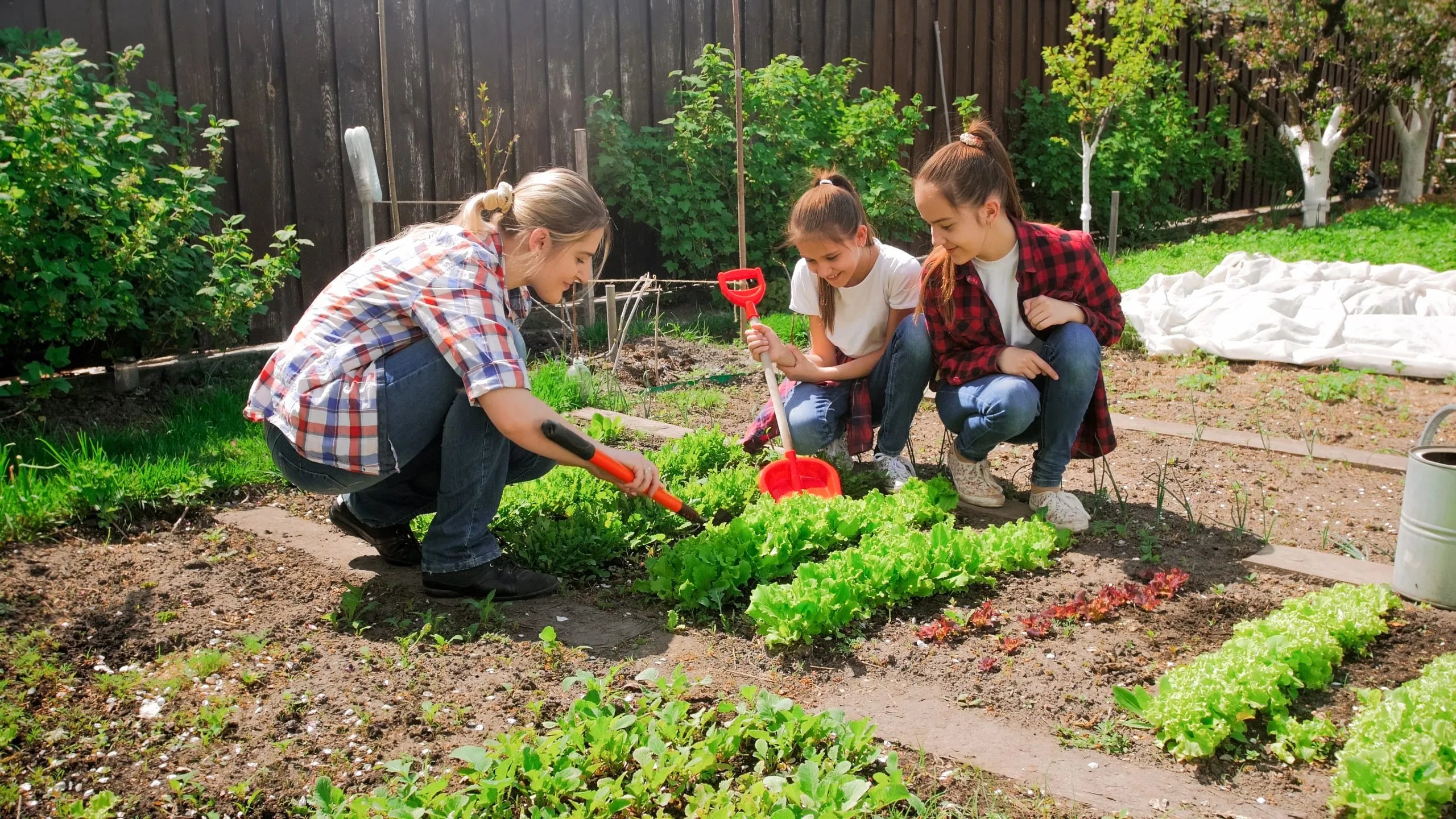Fall gardening. For some, it sounds like a recipe for disappointment. Who wants to put in the effort when winter is looming, threatening to undo all that hard work? But this, my friends, is where the magic happens.
If you've ever strolled through a farmer's market late in the fall season and wondered how those stalls are overflowing with colorful produce, you're about to discover their secret. Fall gardening is where it's at!
We're talking hearty greens thriving in the crisp air, root vegetables growing sweeter beneath the soil, and the satisfaction of a bountiful pantry as those chilly winter winds begin to howl.
Why Fall Gardening is the Bee's Knees
Let’s talk benefits because fall gardening has plenty. First, say goodbye to those pesky summer pests and diseases. They disappear as temperatures drop.
The cool weather brings relief, not just to you, but to your plants as well, resulting in less stress and quite often sweeter, more flavorful produce.
Plus, the cooler fall air often brings more moisture, meaning less time spent watering. These are just a few of the reasons why many gardeners consider fall to be their favorite gardening season.
Fall Planting = Longer Growing Season
Who doesn't want extra time to grow their favorite organic veggies -- which you can harvest and eat fresh within hours? With a little planning, you can extend your harvest well into fall and even winter in some areas.
Imagine fresh salads in November or homemade soup made with homegrown root vegetables in December.
Many cool weather crops can tolerate frost and some even taste better after a light frost. This allows you to continue harvesting into late fall, providing your taste buds with fresh ingredients long after the summer garden has faded.

The Best Crops for Fall Vegetable Gardens
Now, let’s talk vegetables. Many cold-hardy varieties relish cooler temperatures. Think leafy greens like kale, spinach, and arugula - they practically jump out of the ground in the fall.
Don't forget about root vegetables. Beets, carrots, radishes, turnips - the fall garden is where they shine. Their flavors deepen and become more pronounced as the weather turns chilly.
Then there's broccoli, cauliflower, and Brussels sprouts, which also thrive in the cooler temperatures. You can even plant garlic and peas in the fall for an early spring harvest.
| Leafy Greens: | Root Vegetables: | Other Fall Delights: |
| • Kale | • Beets | • Broccoli |
| • Spinach | • Carrots | • Cauliflower |
| • Arugula | • Radishes | • Brussels Sprouts |
| • Lettuce | • Turnips | • Peas |
| • Mustard | • Parsnips | • Garlic |
| • Swiss Chard | • Rutabagas |
Getting Started: A Simple Guide
First, grab a soil thermometer. This nifty tool will help you determine when the soil temperature is just right for growing fall garden vegetables. Aim for a range of 40°F - 60°F for most fall crops.
Next, you’ll want to determine the “first frost” date for your hardiness zone. Your first frost date is the average date your area experiences its first frost.
This date is key because you’ll use it to count backward to determine the ideal garden planting dates based on the number of days each plant needs from seed to harvest.
Remember those “days to maturity” you see on seed packets? This is where that information is crucial.
Knowing your first frost date and the days to maturity helps you choose the best fall crops to ensure they have enough time to mature before the frigid weather sets in.

Direct Sowing Seeds in the Garden
If you’re starting with seeds directly in the garden, follow these simple guidelines for success:
1. Clear the existing debris - leftover plant material, pesky weeds - get them outta there.
2. Give your soil some love - amend with compost - those microorganisms in compost are a plant’s best friend.
3. Sow those seeds at the correct depth – read the seed packet; it’s your best resource.
4. Keep the soil consistently moist but not soaking - aim for a nice, damp feeling, like a freshly wrung sponge.
5. As those seedlings sprout, keep a watchful eye out for hungry pests or signs of disease – it’s better to catch these early.
By following these simple steps, you'll give your seeds the best chance to thrive right from the start. Stay attentive to your garden's needs, and you'll soon be enjoying a healthy, vibrant harvest.
Starting Seeds Indoors for Transplanting
For a head start, consider starting seeds indoors before transplanting them outdoors.
1. Pick your container of choice – seed starting trays, peat pots, old egg cartons, get creative (and resourceful).
2. Choose a quality seed starting mix – it makes a difference.
3. Moisten the mix evenly, like a pro.
4. Plant your seeds - generally, two seeds per cell or pot is a good rule of thumb.
5. Keep those babies cozy - a sunny windowsill or under grow lights - you will need 14 -16 hours of light per day for proper seed germination.
6. Once seedlings develop a few sets of true leaves, gradually introduce them to outdoor conditions. Set them outside in partial shade during the day and bring them in at night for one to two weeks. This process is called "hardening off" and helps prevent transplant shock.
7. After plants have been hardened off it's time to get the seedlings transplanted into your prepared soil.
With these straightforward tips you'll give your seeds a strong start indoors and ensure a smooth transition to the garden.
With proper care and attention, your seedlings will be well-prepared for outdoor growth, setting the stage for a successful planting season.
Extending Your Season - Think Beyond the Calendar
The calendar might say winter is coming, but don't hang up your gardening gloves just yet. You can extend your essential fall harvest with a few tricks - think hoop houses, row covers, cold frames, and greenhouses.
They're like cozy little microclimates that keep your plants producing even as Jack Frost makes his appearance. They can be used on a bed garden that is on the ground as well as a raised bed garden.

Row Covers for Frost Protection
Imagine draping your garden beds in a layer of protection. This is what row covers do. These lightweight, breathable fabrics allow light and water to reach your plants, but they trap warmth, creating a haven where frost-sensitive veggies thrive.
Row covers are an easy and affordable way to add 5-10 degrees of warmth, extending your harvest by several weeks.
They also act as a barrier, protecting your plants from pests like cabbage worms and flea beetles. Be sure to secure the edges of the row cover to keep out unwanted critters.
Hoop Houses for Season Extension
Now, let's step it up a notch. Picture miniature greenhouses nestled within your garden, providing shelter and warmth - that's what hoop houses offer.
You can construct these by bending PVC pipes or metal hoops over your garden beds and draping row covers or plastic sheeting over them, securing the edges to create an enclosed, temperature-controlled environment.
Hoop houses, also known as low tunnels, are perfect for extending your season and even overwintering some crops. They create a warmer microclimate that allows you to enjoy vegetable gardening well into the colder months.
And here’s a tip - on sunny days, you can roll up the sides for ventilation to prevent overheating, much like opening the windows in your house.
Cold Frames: A Mini Greenhouse for Your Garden
Cold frames are like mini greenhouses built low to the ground.They consist of a frame, usually made of wood or concrete blocks, with a transparent top, such as glass windows or clear plastic sheeting.
Cold frames work by trapping solar radiation during the day, which heats the air and soil surface inside.
You can use cold frames to get seedlings started in late winter or early spring, harden off seedlings, overwinter cold-hardy vegetables, or even grow cool-season crops late in the fall or straight through winter in some areas.
They are an invaluable tool for gardeners looking to extend the growing season and maximize their yield.

Greenhouses: Maximizing Your Season Extension
You may not think you have space for a greenhouse. However, with a small yard or a balcony, you may be able to use a small greenhouse (so long as you aren't prohibited by an HOA).
Greenhouses come in many sizes and shapes. And if you're handy, you can save some serious money over buying one, as there are many plans available online.
So why get a greenhouse? For one, you can grow a fall vegetable garden, and possibly even a winter vegetable garden.
A greenhouse lets you control nearly every variable in the vegetable garden and greatly extend your gardening season. Garden plants can thrive without the heat and bugs. Soil preparation can be more easily maintained.
Your greenhouse lets you extend your growing season in both spring and fall, grow exotic plants or fruit trees that aren't native to your growing zone, store gardening tools, and more.
Avoid Fall Gardening Mishaps
It happens. Even seasoned gardeners have "oops" moments. Life gets busy and you forget to pay attention to the weather... when an early frost sneaks in takes out your leafy greens.
Keep old blankets, sheets, and garden row covers handy, especially as your days get shorter and your nights get colder.
They're fantastic for adding temporary protection during unexpected cold snaps, and easy to grab from your storage location. And let's not forget trusty buckets - you can cover individual plants on chilly nights.
Conclusion
Successful fall gardening doesn't need to be a race against the clock; it can be a fulfilling, fruitful extension of the growing season. Embrace those cooler temperatures, the fresh fall air, and those surprisingly sweet harvests.
Fall gardening offers another way to connect with nature and enjoy delicious, homegrown produce.
And it can be fun to experiment and discover what thrives best in your neck of the woods. You might just find fall vegetable gardening becomes your favorite time of year to dig in the soil.
If you live in an apartment or condo without a yard, consider one of the indoor-gardening setups to grow a few fresh veggies during fall and winter. Something is better than nothing.

FAQs About Fall Gardening
What gardening should be done in the fall?
Fall gardening includes planting cool-season vegetables, preparing your garden for winter, and even getting a head start on next spring. It’s a great time to divide perennials, plant trees and shrubs, and garden soil preparation.
Consider planting cover crops in your vacant garden beds to improve soil health, add organic matter, and prevent erosion during the winter months. This will set the stage for a productive garden come spring.
When should I start my fall garden?
You should plant fall gardens six to eight weeks before your region's first expected frost. Remember to factor in the days to maturity listed on your seed packets to ensure your plants have ample time to mature before the first hard frost arrives.
What vegetables can you plant in the fall?
Many delicious vegetables thrive in cooler temperatures and are perfect for fall gardens. Leafy greens (kale, spinach, and lettuce) and root vegetables like beets, carrots, and radishes.
Other great fall vegetables include broccoli, cauliflower, Brussels sprouts, and cabbage. You can also plant garlic and peas in the fall for a spring harvest. These cool-season crops prefer the cooler temperatures and shorter days of fall.
What plants are good to plant in the fall?
Besides cool-season vegetables, many plants benefit from fall planting. Bulbs like tulips, daffodils, and hyacinths should be planted in the fall for a beautiful spring display.
Trees, shrubs, and even some perennials also benefit from fall planting. The cooler temperatures and fall rains allow them to establish strong root systems before winter, giving them a head start on spring plant growth.





Share:
Addressing the Doctor Shortage: Key Steps Forward
How to Lower Stress: 26 Strategies You Can Start Today